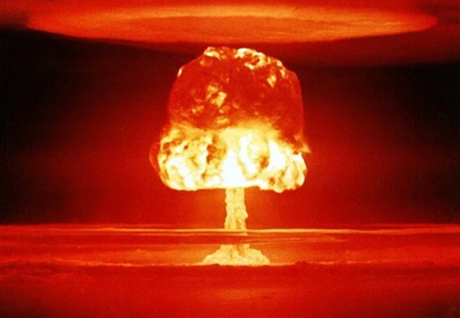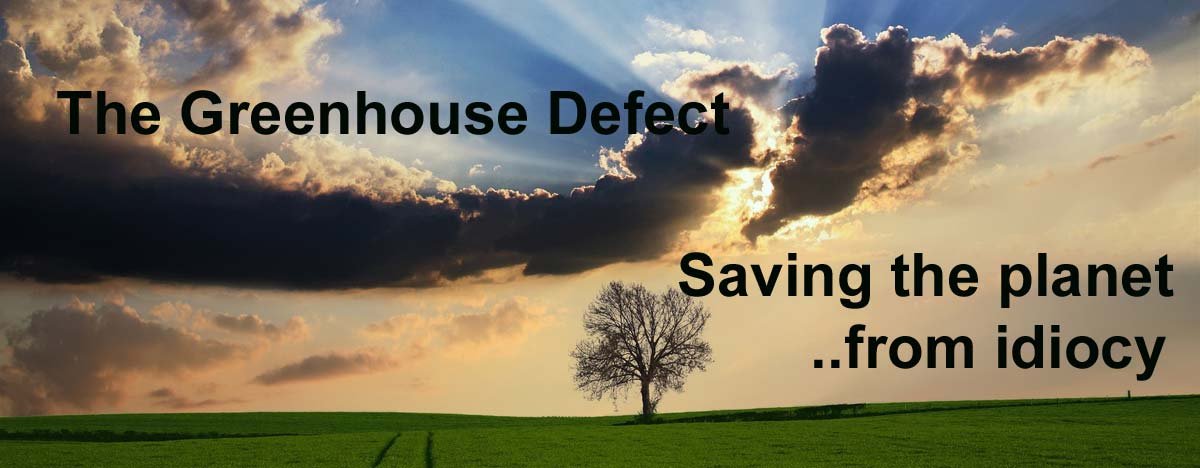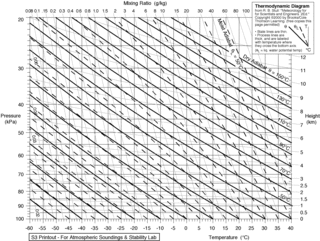Let's nuke the GHE
Alright, now this might be a bit sophisticated, even by the standards of this site. I mean those standards are obviously light years ahead of NASA and the basket of all other deplorables, and so that should mean something at least. Yet, since I am doing my best to make smart things simple, rather than making stupid stuff complicated, I am positive there will be a path forward. And yes, the wording may be a bit hyperbolic, but then again, actually not really.

There is a complex of issues everyone being into climate science should have heard of. First of all we have (or not?) the so called "hot spot". It means an extraordinary warming of the higher tropical troposphere. The subject is controversial on its own, since a) the logic and thus climate models suggest it should occur, while b) the observations fail to detect it. Accordingly "critics" conclude the models were no good, while the apologetic side comes across every now and then claiming to have found it eventually. Kind of a Bigfoot, you know. It is a bit of a cabaret, like so many other side shows of "climate science".
The interesting part for now is rather the logic behind it. Imagine an ice skater doing a pirouette. Arms stretched out, slow rotation, arms pressed to the body, fast rotation, which is due to the law of energy conservation. With the movement of molecules it is the same thing. With high pressure gas molecules will have little space to move, making them move fast, which again translates into a higher temperature. You can heat a gas simply by contracting it. Accordingly air will cool or heat as it moves up or down within the atmosphere, as there will be a change in pressure. This adiabatic lapse rate is 9.8K/1.000m in theory.
Practically there are certain factors which will influence this lapse rate. Air, also due to GHGs, is emitting more LW radiation than absorbing SW solar radiation, of which most is getting absorbed by the surface. So on average there is excess heat at the surface, making the atmosphere unstable, which is constantly getting balanced by conduction, convection and atmospheric mixing. This is one main driver of weather, if you will. However this compensating mechanism is in itself depending on the imbalance, which thus will never be nullified. Therefore a perfectly dry lapse rate would be even higher than the named adiabatic lapse rate, maybe about 10.8K as the emagram1 suggests.
In reality the lapse rate is a lot smaller, about 6.5K/1.000m, which is due to latent heat. Latent heat consists of two components, one is evaporation and the other one condensation. In short evaporation catches heat and condensation releases it. It is a kind of fast track to move heat from the surface into the (higher) atmosphere. It sharply reduces the lapse rate and it is necessarily linked with the most important "condensing" GHG vapor. Well, to my knowledge it is the only condensing GHG.
Since the GHE is a function of emission altitude and lapse rate it should become obvious how vapor will not only be warming Earth, but also cooling it. A flatter lapse rate means less GHE. Or alternatively you can look at it like vapor simply transporting heat from the surface to the atmosphere, from where it can be de-radiated into space. In this way vapor works like a heat sink, and if it was not for this specific property of vapor, the GHE of Earth would be a lot larger and the surface a much hotter place.
Of course that insight is nothing new, rather you can find plenty of references hereto. One, though not too brilliant example is Goody, Walker (1972)2:
Our theoretical model will be complete once we have calculated the ground temperature. The fourth power of the ground temperature is equal to the fourth power of the effective temperature added to the fourth power of the temperature of the bottom layer of the atmosphere. We find a value for the ground temperature of 333°K (sic!), shown by an arrow at the bottom of Fig. 3-8.
Our theory is inadequate because radiation is not the only process that carries heat upward from the ground and from the lower levels of the troposphere. Another process tending to hold down the temperature at the ground and to increase the temperature of the upper troposphere is known as convection.
We can, therefore, conclude that an atmosphere will be stable against convection at higher altitudes but may become unstable at the lower altitudes where there is enough gas to absorb infrared radiation strongly.
What they did was to consequently apply the idea of "back radiation" warming. Every (imaginary) opaque layer of the atmosphere would add its "back radiation" to the next lower level, resulting in some exponential "GHE" in total contradiction to observations (and in total violation of the laws of thermodynamics). Of course this theoretic approach is complete utter nonsense, since "back radiation" heats NOTHING. Equally all the conclusions, as to why observations are different than their model, are all wrong. The problem with this almost 50 year old book is, that a lot of "climate scientists" have read it (a while ago) and based their understanding of the physics on it, even if they do not reference their source3.
The irony there is, that if such a cascade of heating would work, we had instantly "fixed" climate change. Just build a device with multiple layers of semi-transparent glass, let some source of energy shine onto the "open side" and expect extremely high temperatures on the last, absorbing layer. Use the extreme heat and energy there to feed the original moderate energy source and the excess energy to propel everything else. A perpetuum mobile at last, no more need for fossil fuels..
In reality the GHE can be very simply illustrated by the figure below. It is all about emission altitude (photosphere) and lapse rate. Sure, the concept is simplified as there is no uniform emission layer, nor would there be one single lapse rate god given. Yet if you want to understand the basic concept, that is as good as it gets, even with very conservative or "consensus" friendly parameters here.

From that perspective it should be obvious how the GHE can be influenced. It is true for any change in the emission altitude, or the photosphere respectively. Add GHGs, elevate the photosphere and you will get higher surface temperatures. Accordingly the chart also shows how "back radiation" is irrelevant to the GHE, I mean not just because it is not present in the chart. Imagine there was indeed just one photosphere layer with the atmosphere fully transparent below and above it. Then "back radiation" would always correspond to an emission temperature of 255K, regardless of the altitude of the photosphere. That is while the GHE itself will be highly sensitive to it.
The other component is the lapse rate. Tilting the lapse rate, while holding emission altitude and emission temperature constant, will necessarily change surface temperature. If the lapse rate was not 6.5K per 1.000m, but 9.8K, than in the above context the GHE would grow from 33K to ~50K (= 33 / 6.5 x 9.8). It is a huge difference, and one that will not change substantially if we make the model more complex and add multiple emission layers, each responsible just for a fraction of total emissions. The model however would necessarily get inaccurate past the troposphere, where the lapse first turns to zero and then changes the sign in the stratosphere.
Anyway, vapor and the latent heat it transports is a massively restricting factor to the GHE. With a dry lapse rate it would be a lot larger. On the other side if there was no vapor, the average emission altitude would be a lot lower as well. So seemingly the question is up, what effect is stronger. Is the net contribution of vapor even positive?
However the question is logically complicated of and full of pitfalls. The GHE as it is already includes the dampening effect of latent heat. There is no way to argue it would be any smaller than it actually is, just because of vapor. Rather in the absence of the latent heat vapor provides, it would be larger. And if someone theorizes the GHE was actually larger than what we observe, it is of course counterfactual, but not completely wrong. It seems a valid perspective to some extend, though not in the context Goody, Walker provided.
So far all looks very unsuspicious and there is nothing that would seem to threat the GHE, unlike what the headline suggested. So what is this article all about? Well, there is yet a concealed logic that will only become comprehensible if we recall the status quo of our analysis so far. Emission sided the GHE reduces emissions from about 355W/m2 at the surface to only 240W/m2 TOA. Again, both clouds and GHGs are largely overlapped in the way they elevate the emission layers to higher altitudes and thus lower temperatures. Ignoring this fact is certainly one of the biggest and most painful blunders in the consensus GHE theory.

If it were not for latent heat this GHE of 115W/m2 would be larger. The question is just what the lapse rate would look like in the absence of vapor, and I am not expert on this. Would it be the dry adiabatic lapse rate of 9.8K/km, or 10.8K/km as the emagram above suggests? I do not know, but we can play through these assumptions.
If the lapse rate was 9.8, then the GHE should grow to 115/6.5 x 9.8 = 173.3W/m2 holding emission layers constant. Accordingly surface emissions would then be 173.3 + 240 = 413.3W/m2, corresponding to 299K surface temperature at an emissivity of 0.91. The tricky detail however is on how this would affect clouds and GHGs in their respective roles. The GHE of clouds would grow from 80 to 120.6W/m2, that of GHGs from 85 to 128W/m2, and the overlapped component would grow from 50 to 75.4W/m2.
Thanks to latent heat that is not so, and that is where the problem is. We are not constructing counterfactual scenarios for the sake of science fiction, but to address causation. If it were not for vapor and latent heat, clouds alone would provide a larger GHE than we actually observe. And of course clouds themselves are a product of latent heat, I see this causation as well. Yet, clouds as they are, have about 40W/m2 less LWCREr (based on a dry lapse rate of 9.8K/km) due to latent heat and thus vapor. This figure exceeds the exclusive GHGe of only 35W/m2, so that if we take it into account, the net effect of GHGs turns negative.
If we would glue all the clouds there are into the sky, and then remove all GHGs so that the lapse rate would spring back to "dry", the Earth would warm a little bit, not cool. It may sound impossible, but logically it has to be. Allowing for the cooling effect that vapor provides, the only positive contribution by GHGs to surface temperatures rests with the redundant component. But being redundant by nature, counterfactually removing GHGs from the equation will not make any difference there. With clouds given, GHGs are about climate neutral or even slightly negative.
Of course this must be understood within the context. I mean it is true if we put all GHGs into one basket and make no difference there. Then the chilling effect of vapor will dominate that of non-condensing GHGs like CO2. It will not mean these other GHGs would not warm the planet, which they do. There is a very important difference between condensing and non-condensing GHGs.
The scope of this perspective, as refreshing as it may be, is not to be disruptive for fun, or to just outsmart "climate scientists", which is one of the lesser challenges btw. Rather it is about understanding what we see, as there is a lot of empiric evidence we could never comprehend without this theoretic framework (remember the dry Sahara is hotter than other tropic regions?). There are very interesting findings yet to be discussed. Even more important however is the prospect on enhancing the GHE by adding GHGs, aka "anthropogenic global warming". Of course CO2 can cause some warming, but with vapor it is a different story. I am afraid the idea of a positive vapor feedback is straight out of fiction, just like most of "settled climate science".




Comments (0)
No comments found!